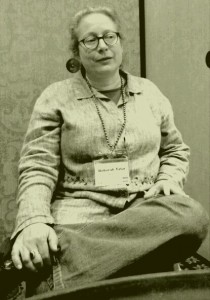Live blog, NABJ blogging panel
I took these notes at the NABJ convention in Philadelphia in early August. Although I never got a chance to refine them, the notes will be useful for the Social Media class I will be teaching next semester.
Topic: What makes a multimedia blog successful?
Dan Farber -Great content. – the same things that make for great journalism
Neal Scarborough -Before you worry about multimedia as a blogger, decide who you are as a blogger, where your audience is or what they want.
Clay Cane – Find your style, your tone, and what you are passionate writing about. He started with a personal blog and was discovered by BET because he built a strong following. “It really is being your own brand, and selling yourself.”
Sarah Bernard, Deputy Director of Digital Strategy, the White House: Use your blog to cover undeserved stories. Be consistent.
Question: How do you drive traffic?
Clay Cane collects email subscriptions, sends out blasts when he has big news. Example: he posted an interview with Janet Jackson to his site and sent out masse emails. Some major news sites picked it up and linked to him.
Farber: learn about SEO
Moderator Markette Smith: Shows Alexa.com. She is collecting questions via twitter at #nabjbloggingandbeyond. Question: can we attract advertising?
Cane: He got started with Blogads.com. Notes that advertising market has changed.
Scarborough: “Blogging has really opened up.” Bites that Richard Branson has a blog.
Question: Publisher of a niche blog for lawyers wants to know how to make more money.
Moderator Smith tries to go back to how to make money.
More later: running out of power and this room is short on outlets.
Sidebar: How Kevin Brooks Found the Common Ground Between Writing and Computer Science
I first came across Kevin Brooks’ work around the time he was completing his Ph.D. dissertation at the MIT Media Lab on a technology and method for telling multithreaded interactive stories. Since earning his Ph.D. in 1999, Brooks has applied his knowledge of computer science and storytelling to the process of product and service design for Motorola. I was particularly interested in talking to him because his work arises from the isomorphism between writing and programming.In this video, he explains what he does as a technology storyteller, and explains how he found a way to integrate fields that had once seemed so separate. He has also shared his insights in a book that he co-authored with Whitney Quesenbery, Storytelling User Experience: Crafting Stories for Better Design (Rosenfeld Media, 2010).By the way, Brooks also performs as a storyteller. Here he is performing at 2010 storytelling event sponsored by Massmouth :
Sidebar: Learning about learning – a conversation with Deborah Tatar

Deborah Tatar is a cognitive scientist at Virginia Polytechnic University whose current research focuses on understanding and clearing the obstacles to student learning in mathematics and science. For example, she was a principal investigator on the SimCalc project, a software-based interactive math curriculum for middle schoolers that has shown demonstrable success when accompanied by professional development for teachers. She is a collaborator on the CPATH Distributed Expertise project for which I am a co-PI.
In this conversation about what it takes to bring students from under-represented groups into computing, Tatar cautions against easy generalizations and simplistic solutions, offering intriguing possibilities for ways in which we can assist learners in finding the paths to understanding that are most appropriate for them.
Tatar’s insights remind me of Georgetown University math professor Jim Sandefur’s use of “think-alouds” – recorded interviews with students who explain their thought processes while working on math problems. It also echoes and complements the insights from Visible Knowledge Project, spearheaded by Randy Bass during the last decade. I was a researcher in that project in the early 2000s. My research project for VKP, “Blogging on the Beat” details my action research project on whether having journalism students keep blogs will lead deeper and more richly-sourced reporting.
This interview is part of my work in progress: The Re-Education of Me: Journalism, Diversity and Computing. Pearson, a long-time professional writing practitioner and educator, is using auto-ethnography and literary journalism to probe the implications of the transformation of journalism by computer science for journalism education. This interview was recorded at the National Science Foundation’s CE 21 community meeting in New Orleans, Lousiana Jan. 30, 2011.
View the interview (Quicktime file, runtime about 26 minutes)
From the NSF CE21 community meeting: Meet Lily Fae Pierre
I spent the last several days in New Orleans with 400 computer science educators, education researchers and policy makers at the National Science Foundation’s CE 21 community meeting. CE 21 is a new initiative to boost K-16 computer science education. Central to that effort is a commitment to strengthen computer science curricula and teaching at the high school level.
One of the most interesting people I met there was Lily Fae Pierre, a computer science teacher at Los Angeles High School. A former industrial engineer who became interested in technology as a resul of growing up on a family farm in Mississippi, Pierre uses chants and cheers to educate and engage her students. She allowed me to record one of her routines:
- «Previous Page
- 1
- 2
- 3
- 4
- …
- 6
- Next Page»